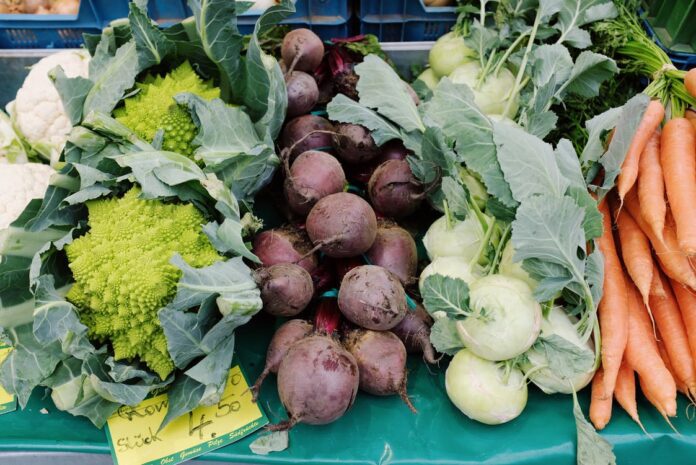How to make the most of your leftovers and save money, expert reveals
Paul Wilson, Personal Finance Expert at CashLady.com, shares his thoughts on how you can make the most of your leftover food and save some extra pennies.
- Use the ends of your loaf to make breadcrumbs
Many Brits avoid eating the end pieces of their loaf, usually leaving them destined for the bin. Instead of throwing them out, try blending them down to breadcrumbs so that they can be used when making another dish such as homemade fish and chips. You could even mix them with garlic, butter and cheese to pour over a mac and cheese to give it a crunchy texture.
And why stop at the end piece? Most children prefer their sandwiches with the crusts removed, so these can be saved and added to the breadcrumb blend mix too! Two birds, one stone.
2. Versatile veggies
There are countless ways that you can make the most of your weekly shop using your leftover vegetables. Roast any spare veggies with your seasoning of choice and simply blend to make a creamy and incredibly healthy soup.
The beauty of veg is that they can be added to almost any dish to enhance the taste whilst also upping your vitamin intake. Throw any remaining pieces into your regular pasta dish, morning omelette or onto your Friday night pizza to make them more nourishing.
3. Prepare potatoes to create a meal for breakfast or lunch
Potatoes are one of the most common foods leftover and unused after cooking as it’s all too easy to get carried away with cooking too many.
If you’ve got leftover boiled potatoes, why not use them to make potato cakes that you can enjoy for a hearty breakfast? If you’ve got about half a pound of peeled potatoes, all you need to do is mash them in a bowl and add 2oz flour, 1oz butter and a dash of salt. Then roll out onto a floured surface, cut the potato cakes out with a mold and then fry for 4-5 mins on each side.
Alternatively, why not use your potatoes to make a potato salad that you can bring to work the following day? Buying lunch out every day can quickly get expensive so this way you’re avoiding food and money waste.
4. Get creative with your fruit
We’ve all bought a hefty amount of fruit in the midst of a health kick, which realistically never all get eaten. If you’ve bought a bit too much fruit than you can handle, there are easy ways to ensure that it doesn’t go to waste.
Why not infuse the fruit with water to make ice pops, a refreshing and uber-healthy snack? Or throw all of the remaining pieces into a fruit salad, or blend together with some yoghurt to make some delicious smoothies? Leftover pieces can even be used as a garnish.
A fruit sorbet is also surprisingly easy to make. All you’ll need is two pounds of fruit, lemon juice, a cup of sugar and water. For a more hearty dessert, you could make an apple crumble, a blackberry pie or banana bread.
Another option to consider is making your own jam by boiling your fruit. If you seal the jam it will last up to a year in a cool, dark place and makes a lovely thoughtful gift.
5. Transform your leftover meat
Using leftover meat doesn’t need to be boring. There are many vibrant and budget-friendly dishes that you can easily whip up without breaking the bank.
Ensure that your reheated meat is piping hot and use it to make a curry or stir-fry. Don’t worry if you feel you’re lacking enough meat for the curry as it can easily be bulked out with potatoes. Similarly, you can always add beans and chickpeas to your stir-fry if you’re worried about the quantity of meat.
6. Don’t forget to use your leftover drinks
It’s not just leftover food that you can make the most of in the kitchen. If you’ve got a bit of red wine to spare following a party, why not use this as a flavouring for a stew, soup or add it to a bolognese sauce to give it a richer taste?
Red wine also works well with poached pears for a tasty but simple dessert. If you have leftover white wine instead, this can be used for dishes like cod or soaked into a risotto or paella for that extra flavour.
If you want to get a bit more creative, you could make vinegar with your leftover wine. Simply pour into a bowl, add starter vinegar, stir vigorously and cover. Let it sit at room temperature and stir it daily. After around 3 weeks it will start to taste like vinegar where you should then transfer it to a sealable bottle.
Paul Wilson is a Consumer Finance Expert at Financial Conduct Authority authorised and regulated credit broker CashLady.com
Help keep news FREE for our readers
Supporting your local community newspaper/online news outlet is crucial now more than ever. If you believe in independent journalism, then consider making a valuable contribution by making a one-time or monthly donation. We operate in rural areas where providing unbiased news can be challenging. Read More About Supporting The West Wales Chronicle

























